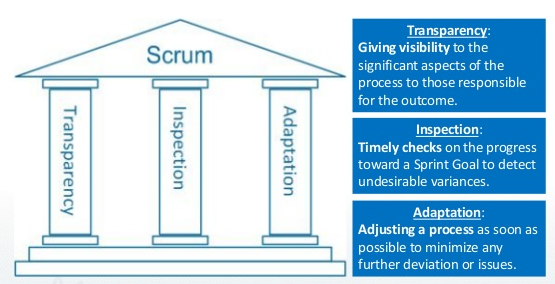Introduction
In the world of software development, Scrum is like the secret sauce for efficient project management. It’s all about teamwork, adapting on the fly, and building things step by step. But, here’s the catch: for a Scrum team to work its magic, it needs two crucial ingredients – trust and transparency. In this blog, we’ll talk about why these two things are so important for a Scrum team to thrive.
Understanding Scrum
Before we dive in, let’s quickly go over what Scrum is all about. Scrum is an approach that breaks a big project into smaller parts, or “sprints,” that last a few weeks each. The magic happens when a team works together on these sprints. There are key roles like the Product Owner, Scrum Master, and Development Team.
Trust in Scrum
1. Trust in Your Teammates
Imagine you’re playing a sport. You need to trust your teammates to pass the ball, make the right moves, and score. In a Scrum team, trust is like that trust in your sports buddies. You have to believe in each other’s skills and intentions. Without it, teamwork becomes tough, and the job takes longer.
2. Trust in the Scrum Way
Scrum has its rules and practices, like daily meetings and planning sessions. Trust in these methods is crucial. If someone doubts the way things are done, it slows down the whole team.
3. Trust in the Product Owner
The Product Owner decides what features to work on first. The team must trust that they’re making smart choices based on what customers need.
4. Trust in the Scrum Master
The Scrum Master’s job is to guide the team and remove obstacles. Trusting their guidance and experience is vital for a smooth journey.
Transparency in Scrum
1. Keep Work Transparent
Transparency means everyone knows what’s going on. In Scrum, it’s important to be clear about what’s getting done, any roadblocks, and any changes in plans. This way, everyone is on the same page, which helps teamwork.
2. Open Communication
Imagine if your teammates in a game didn’t talk to you. Communication is key. In Scrum, you should speak up in meetings, share challenges, and ask for help when needed. Talking openly helps solve problems faster.
3. Clear Backlog
The product backlog is a list of tasks. It should be easy for everyone to see and understand what’s on the list. This makes it simpler to plan and do the work.
4. Explain Decisions
When decisions are made, everyone should know why. If you’re wondering why something is more important than something else, it should be explained. This helps everyone understand the goals.
How Trust and Transparency Work Together
Trust and transparency are like best buddies. They support each other:
1. Trust Leads to Transparency
When you trust your team and the Scrum process, you’re more likely to share information and ask for help when needed. This leads to better transparency because you’re not holding things back.
2. Transparency Builds Trust
When everyone communicates openly and shares information, trust grows. You know you can count on your teammates, and that builds confidence in the team’s abilities.
Why Trust and Transparency Matter
1. Better Teamwork
When you trust each other and know what’s happening, you work together smoothly. This boosts problem-solving, quick decisions, and top-notch results.
2. Higher Productivity
With trust and clear information, you can focus on your tasks without worries. That means more work gets done.
3. Quick Problem Solving
Open communication means problems pop up early and get solved fast. No more waiting until they become big headaches.
4. More Innovation
A culture of trust and transparency encourages creative thinking. Team members feel safe suggesting new ideas, which leads to better solutions and constant improvement.
5. Happier Work Environment
Trust and transparency make work more pleasant. When you feel valued and heard, you enjoy your work more.
Conclusion
In Scrum, trust and transparency aren’t optional extras – they’re the building blocks of success. Without trust, teamwork falters, and without transparency, trust weakens. To make these two things work, everyone has to communicate openly, listen, and aim to get better. When trust and transparency are in place, you don’t just have a Scrum team; you have a powerhouse team that can deliver amazing results.











